Coloquio del Instituto de Física
El Coloquio del Instituto de Física se lleva acabo unicamente en vivo en nuestro canal de YouTube
Liga YouTube
https://www.youtube.com/channel/UCijcZAcDo1Ih5u9e8kiFP3g
Contacto e información: Ing. Cristina Cázares Grageda
Programación del Semestre Agosto - Diciembre 2022
|
|||
| Fecha | Ponente | Procedencia | Tema |
| 1 de febrero | |||
| 8 de febrero | |||
| 15 de febrero | |||
| 22 de febrero |
Dr. Luis Orozco |
Universidad de Maryland |
Enfriamiento por luz de nanofibras ópticas. |
| 1 de marzo | Roberto de J. León Montiel | Universidad Nacional Autónoma de México |
Imagenología cuántica de alta resolución asistida por inteligencia artificial. |
| 8 de marzo | |||
| 15 de marzo | |||
| 22 de marzo | Jan Dhont |
Forschungszentrum Jülich GmbH & Lund University |
Electric-field induced phase transitions of highly charged rod-likecolloids. |
| 29 de marzo | |||
| 19 de abril |
David Wong Campos |
Harvard University |
Imagenología y optogenética de voltaje revela mecanismos de computación neuronal _in vivo_ |
| 26 de abril |
Baron Chanda |
Washington University School of Medicine |
Probing Allostery in ion channels at single molecule resolution. |
| 3 de mayo | Jonathan K. Whitmer | University of Notre Dame | Modeling Ionic Liquid Crystals for Ion Transport. |
| 17 de mayo | |||
| 24 de mayo | Luis Fernando Elizondo Aguilera | Instituto de física / BUAP | Comportamiento estructural y dinámico de un sistema granular vibrado conformado por partículas cúbicas. |
| 31 de mayo | |||
| 7 de junio | Jorge Arreola |
Instituto de Física / UASLP |
La breve estancia activa de un ion dentro del poro de un canal iónico. |
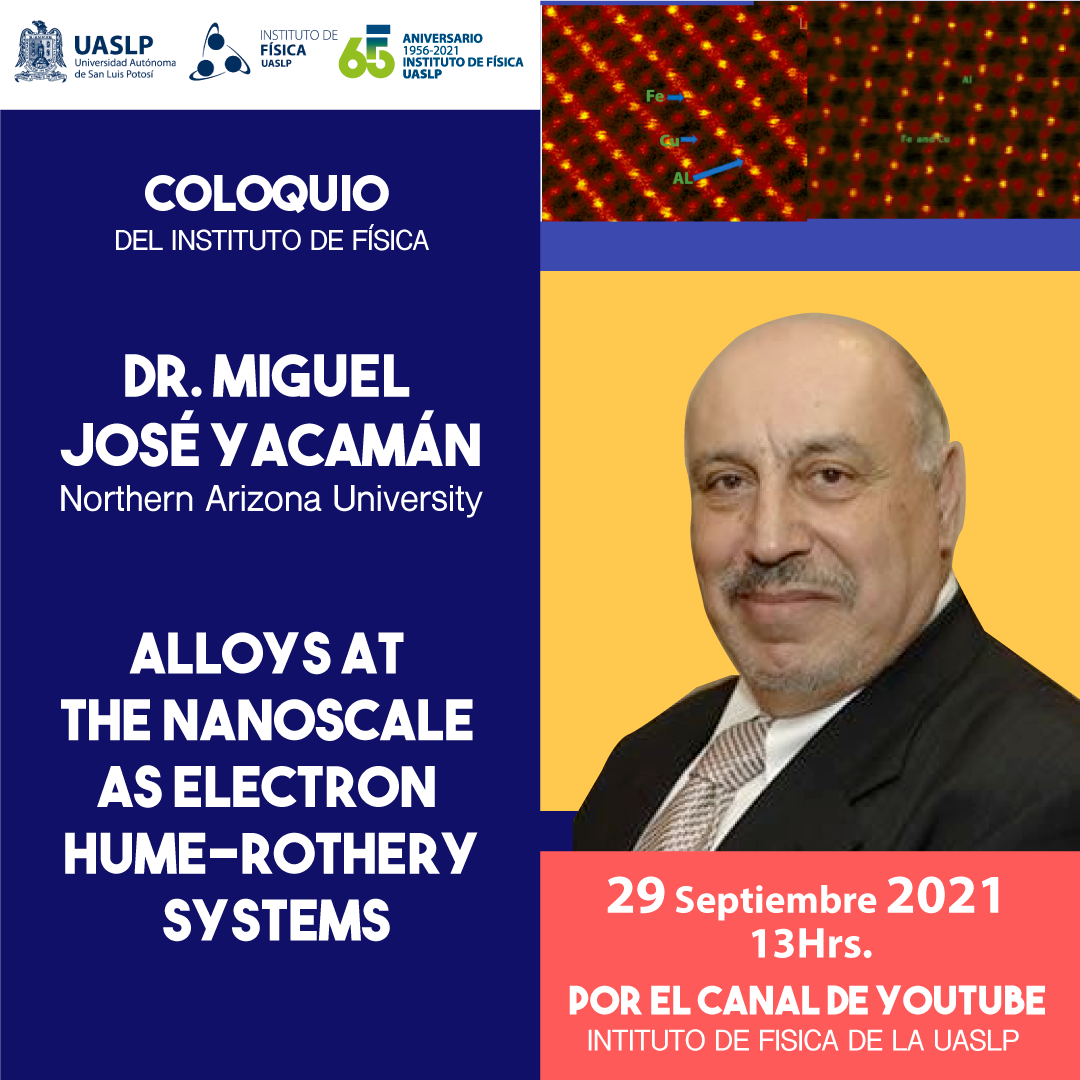
Liga de YouTube
https://www.youtube.com/channel/UCijcZAcDo1Ih5u9e8kiFP3g
Procedencia: Applied Physics and Materials Science Department and MIRA Northern Arizona University.
Resumen: In modern materials science at the nanoscale, it is important to fabricate multi metallic nanoparticles. It is well known that mixing metals produces a system with better properties that either component . However, the rules of alloying at the nanoscale are still not well developed .In contrast in the case of bulk alloys there have been a very intense development on the last decade. Important alloys such as High Entropy Alloys (HEA) and quasicrystals have been fully understood as Electron Hume Rothery alloys. In the present talk we will discuss the applicability of those rules for nanoalloys .We will be shown that it is possible to develop modified rules that can open the way for controlled nanoalloys .We will show several experimental results in bi metallic and trimetallic systems.
- Detalles
- Categoría: Coloquio de Física
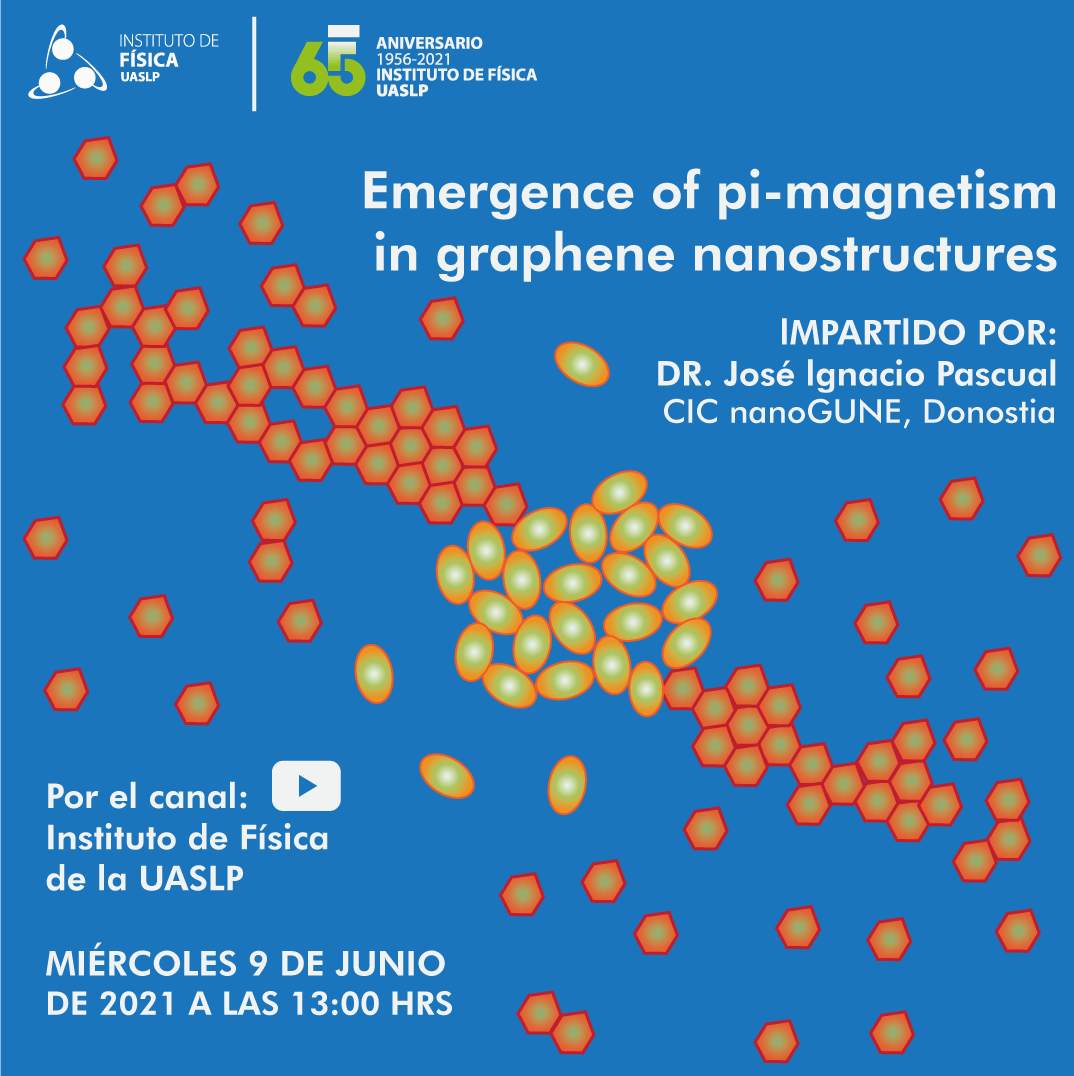
Liga de YouTube
Graphene can spontaneously develop intrinsic paramagnetism. Crucial examples are the magnetization of zig-zag edges in graphene, or the emergence of paramagnetism in open shell graphene nanostructures. I will show that graphene nanoribbons (GNR), fabricated with atomic precision on a metal surface exhibit fingerprints of π-paramagnetism on a metal surface, which can be detected and spatially localized with atomic resolution using low temperature scanning tunneling microscopy and spectroscopy [1].
Single electron spins emerge localized at certain zigzag sites of the carbon backbone. Their presence could be detected and mapped by spatially resolving the zero-energy resonance due to the Kondo effect. We found that near-by spins are coupled into a singlet ground state and quantify their exchange interaction via singlet-triplet inelastic electron excitations. Theoretical simulations picture how electron correlations result in spin-polarized radical states with the experimentally observed spatial distributions. Extra hydrogen atoms bound to radical sites quench their magnetic moment and switch the spin of the nanostructure in half-integer amounts.
I will also review other methods for activating magnetic ground states in graphene. For example, spin states can be created on a ribbon simply by substitutional doping or by incorporating magnetic species into a ribbon using on-surface synthesis routes (see included image of a Fe porphyrin contacted to chiral nanoribbons). In this last case, we proved that the molecular spin survives in the ribbon by using spin-excitation inelastic spectroscopy [2]. By proper selecting the position of the halogen functionalization, we fabricated linear GNR-FeTPP-GNR structures and performed electronic transport measurements [3], detecting spin-excitation fingerprints in transport mode.
References
- J. Li, S. Sanz, M. Corso, D.J. Choi, D. Peña, T. Frederiksen, J.I. Pascual, “Single Spin Localization and Manipulation in Graphene Open-Shell Nanostructures”, Nature Communications 10, 200 (2019).
- J. Li, N. Merino-Díez, E. Carbonell-Sanromà, M. Vilas-Varela, D. G. de Oteyza, D. Peña, M. Corso, and J.I. Pascual, “Survival of spin state in magnetic porphyrins contacted by graphene nanoribbons”, Science Advances 4, eaaq0582 (2018)
- J. Li, N. Friedrich, N. Merino-Díez, D. G. de Oteyza, D. Peña, D. Jacob, and J.I. Pascual, “Electrically Addressing the Spin of a Magnetic Porphyrin through Covalently Connected Graphene Electrodes”, Nano Letters 19, 3288 (2019).
- N. Friedrich, P. Brandimarte, J. Li, S. Saito, S. Yamaguchi, I. Pozo, D. Pena, T. Frederiksen, A. Garcia-Lekue, D. Sanchez-Portal and J.I. Pascual, “Magnetism of Topological Boundary States Induced by Boron Substitution in Graphene Nanoribbons“, Physical Review Letters 125, 146801 (2020)
- J. Li, S. Sanz, J. Castro-Esteban, M. Vilas-Varela, N. Friedrich, T. Frederiksen, D. Peña and J.I. Pascual „Uncovering the Triplet Ground State of Triangular Graphene Nanoflakes Engineered with Atomic Precision on a Metal Surface“, Physical Review Letters 124, 177201 (2020)
- Detalles
- Categoría: Coloquio de Física
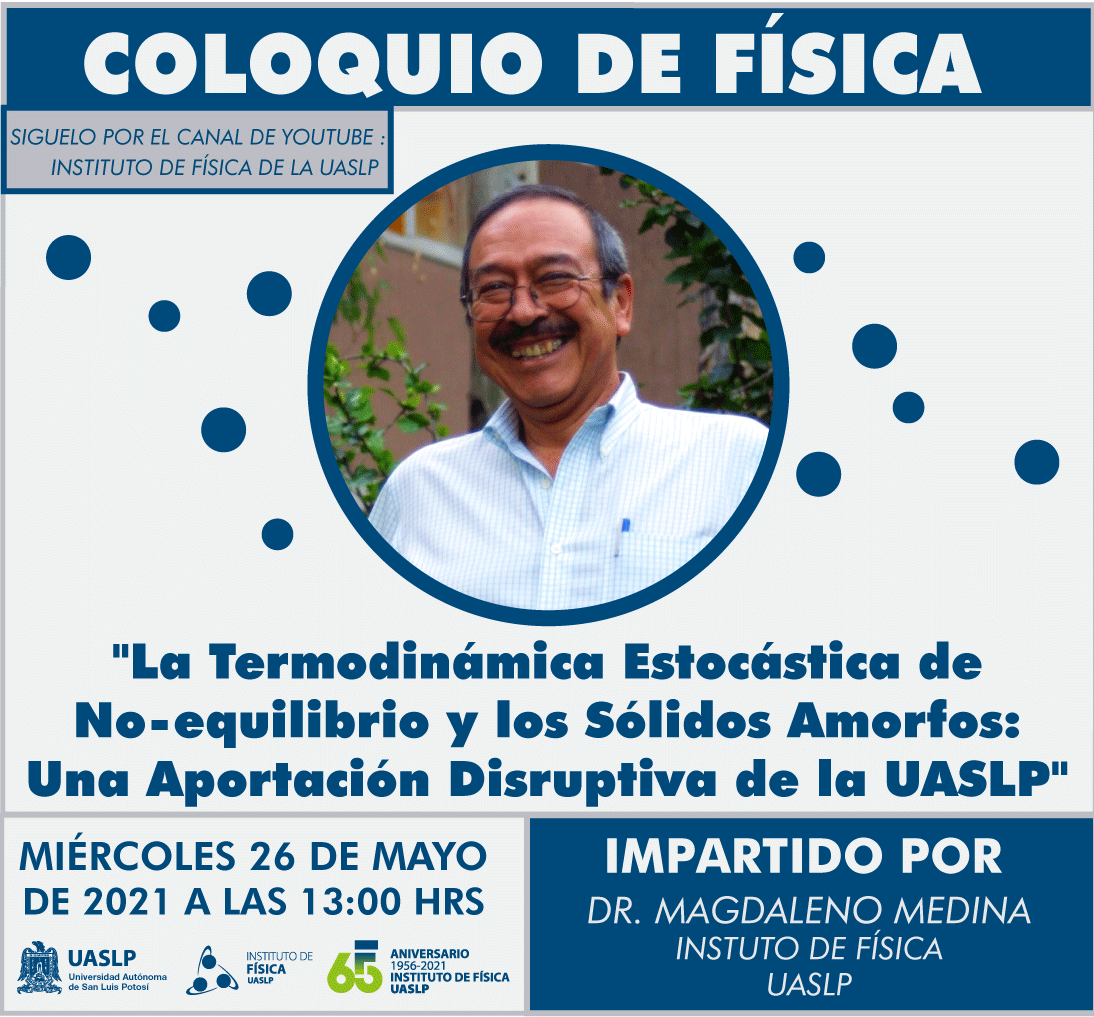
Liga de YouTube
https://www.youtube.com/channel/UCijcZAcDo1Ih5u9e8kiFP3g
Resumen:
En muchas circunstancias, muchos materiales sólidos, blandos o duros, están presentes en una sorprendente riqueza de estados amorfos que no están en equilibrio termodinámico y cuyas propiedades no son estacionarias, sino que dependen de la preparación. Esto a menudo da origen a "diagramas de fase" no convencionales, que muestran nuevas "fases" y/o "transiciones", en las que el tiempo resulta ser una variable esencial (ver, p. ej., Fig. 3 de Ref. [1] o Fig. 1 de Ref. [2]). Materiales "high-tech", como los vidrios metálicos para usos espaciales, o misteriosos, como muchas estructuras de relevancia biológica, o tan ordinarios como los vidrios, los cementos, los geles, las espumas sólidas, que vemos y usamos todos los días, pertenecen a esta categoría. La dependencia de sus propiedades en el tiempo y en su forma de preparación, contrasta con las fases de equilibrio ordinarias (gases, líquidos y sólidos cristalinos), cuya existencia y propiedades pueden ser predichas por el principio de máxima entropía y la famosa expresión de Boltzmnn para ésta, S=kLnW. La física contemporánea no acierta a desentrañar los principios fundamentales que gobiernan la formación y existencia de los sólidos amorfos, lo cual constituye "el problema sin resolver más profundo e interesante de la teoría del estado sólido" [3]. En este coloquio narramos, sin embargo, el desarrollo de un formalismo termodinámico-estadístico de los procesos irreversibles, concebido totalmente en la UASLP [4], capaz de desvelar el misterio que plantea la existencia de los sólidos amorfos, sus fases de no equilibrio y el correspondiente envejecimiento ("aging") de sus diagramas de fases, dadas las interacciones moleculares subyacentes y el protocolo de preparación [5].
Referencias:
[1] B. Ruzicka et al. Nature Materials 10, 56 (2011). [2] K. Nakashima, K. Noda, and K. Mori, J. Am. Ceram. Soc., 80, 1101 (1997). [3] P. Anderson. Science 267, 1615 (1995). [4] P. E. Ramírez-González and M. Medina-Noyola, Phys. Rev. E 82, 061503 (2010). [5] Benigno Zepeda-López y M. Medina-Noyola, J. Chem. Phys. 154, 174901 (2021).
NOTA:
La versión en pdf de estos artículos se pueden consiltar y bajar de esta carpeta de Dropbox:
https://www.dropbox.com/sh/727yojx4ba04a34/AAAsDLe_E7w5kP8Jcn0-xS37a?dl=0
- Detalles
- Categoría: Coloquio de Física
Coloquio de Física - Visualizing Structure, Dynamics and Interactions of Complex Molecular Machinery
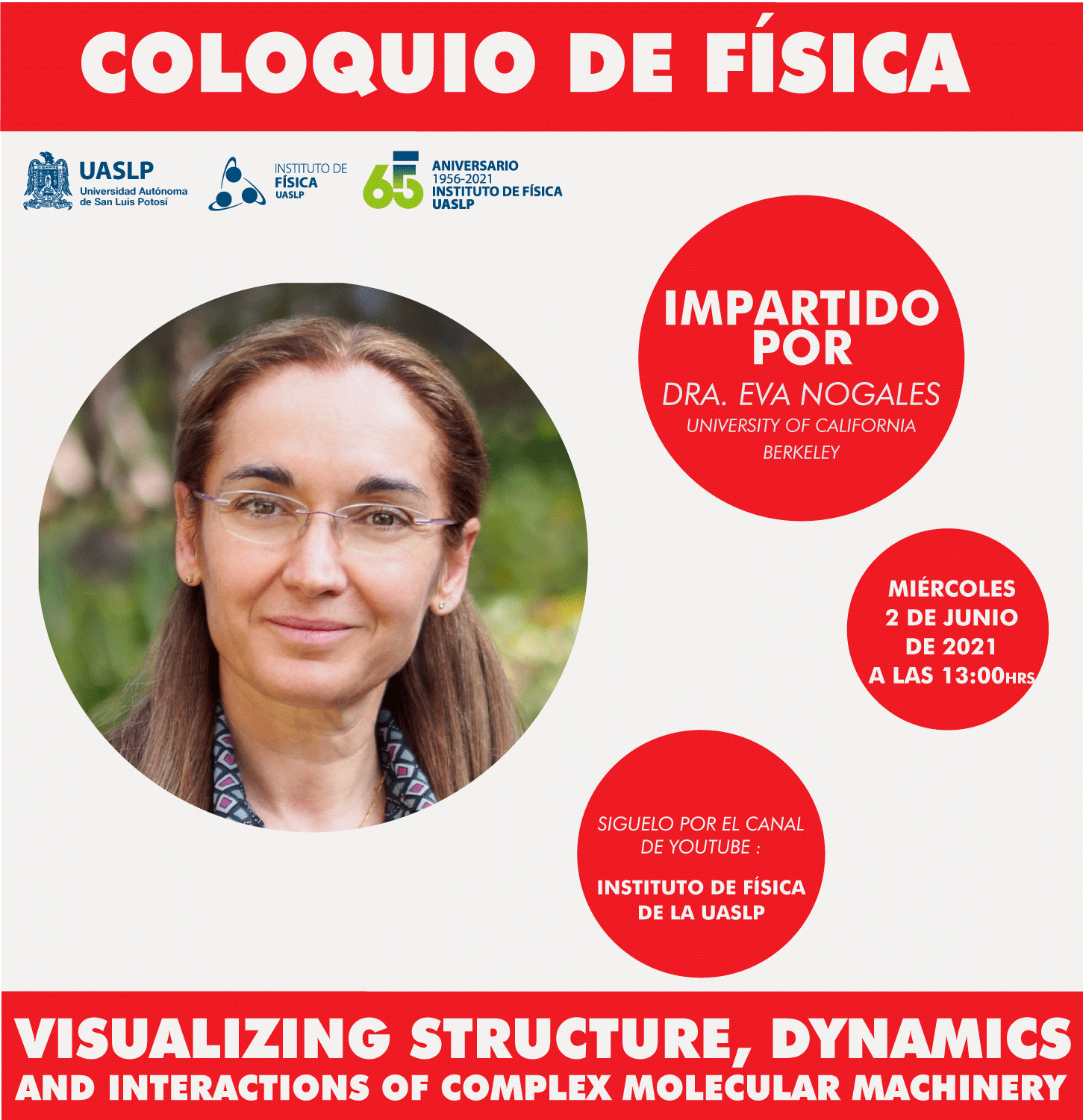
Liga de YouTube
https://www.youtube.com/channel/UCijcZAcDo1Ih5u9e8kiFP3g
Resumen:
Cryo-electron microscopy (cryo-EM) has emerged as a powerful
structural biology technique that overcomes some of the bottlenecks of
other methods used for structure determination. In particular, the
structural analysis of large and flexible macromolecular assemblies
that cannot be obtained in large amounts is now possible by cryo-EM.
Among such samples are large protein complexes that are required for
the regulation of gene expression at the transcriptional level. In my
presentation I will cover some of the progress my lab has made
concerning such human molecular machinery.
If you would like something more specific, I can send it closer to the
date.
- Detalles
- Categoría: Coloquio de Física
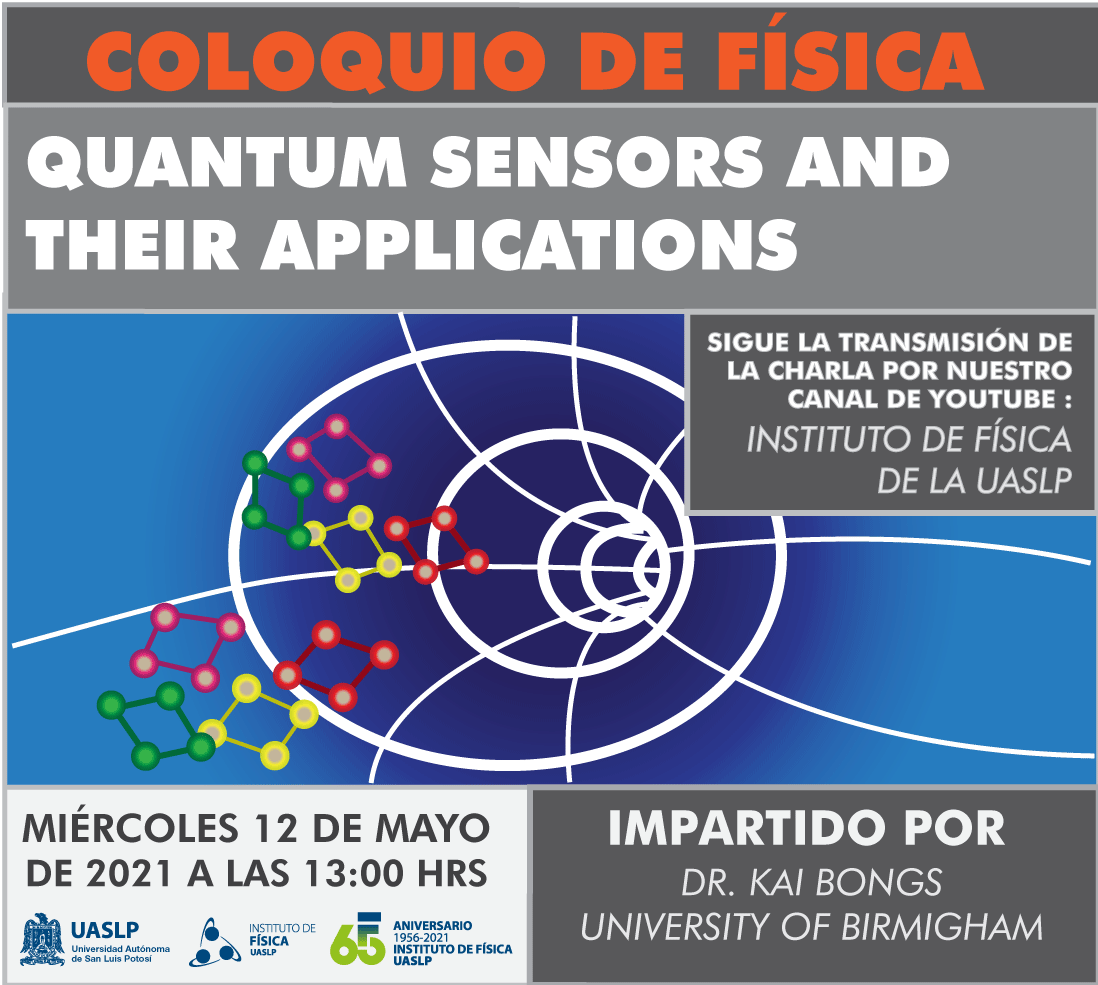
In 2020, Quantum Sensors have been named one of the top 10 emerging technologies by the World Economic Forum. This is just one recent step in the rapid emergence of Quantum Technologies and the international race to harness their potential. The UK National Quantum Technology Hub in Sensors and Timing is looking into the ground-breaking possibilities quantum sensors promise in looking into the ground, seeing the activity of the human brain, detecting small objects in the air and finding your position wherever you are. This talk will provide an introduction to atom-based quantum sensors and clocks and discuss some of the emerging applications.
- Detalles
- Categoría: Coloquio de Física
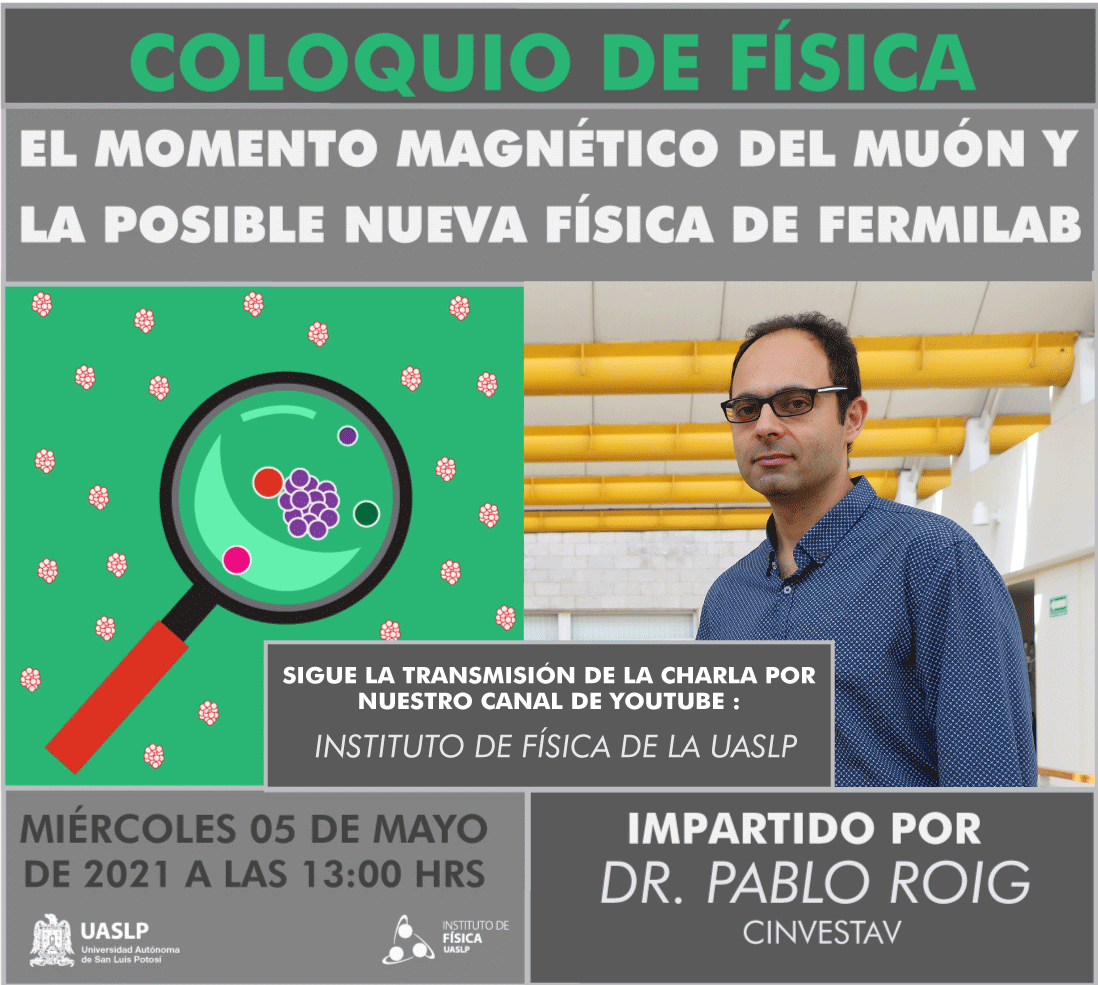
Resumen: El 7 de Abril se publicó la medida de la colaboración Muon g-2
de Fermilab del momento magnético anómalo de esta partícula. La misma es
levemente más precisa que el mejor resultado anterior (obtenido en
Brookhaven) y compatible con éste. Así, a través de su combinación, se
reduce el error de este observable. Al comparar dicho resultado con la
predicción del Modelo Estándar, la discrepancia entre ambos aumenta (de
las 3.7 desviaciones estándar con el resultado de Brookhaven a las 4.2
del combinado). Revisaremos los principales aspectos -experimentales y
teóricos- involucrados y concluiremos sobre las posibles implicaciones
de este resultado: en sí mismo, en el contexto de otras anomalías en
física de sabor, y frente a la ausencia de nuevas partículas elementales
descubiertas en el LHC (más allá del Higgs).
- Detalles
- Categoría: Coloquio de Física
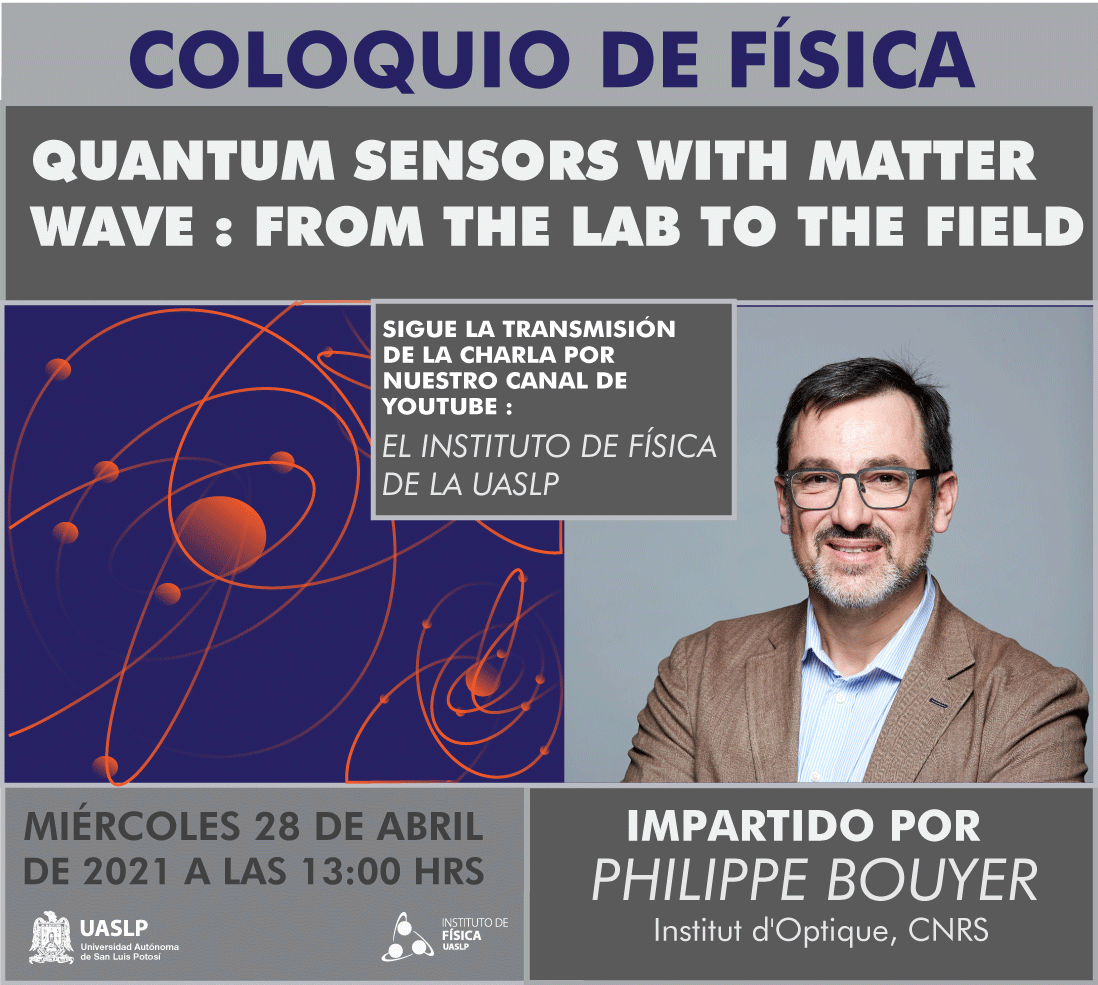
Abstract : The past decades has seen dramatic progress in our ability to manipulate and coherently control the motion of atoms. Although the duality between wave and particle has been well tested since de Broglie introduced the matter-wave analog of the optical wavelength in 1924, manipulating atoms at a level of coherence allowing for precision measurement has only become possible thanks with our ability to produce atomic samples of few microdegrees above absolute zero. Since the initial experiments many decades ago, the field of coherent atom optics has grown in many directions. This progress has both fundamental and applied significance. The exquisite control of matter waves offers the prospect of a new generation of force sensors of unprecedented sensitivity and accuracy, from applications in navigation and geophysics, to tests of general relativity or study of highly-entangled quantum states.
Nevertheless the future of matter-wave inertial sensors goes far beyond lab-based inertial sensors. While these experiments are typically quite large, require a dedicated laboratory, and are designed to operate well only
- Detalles
- Categoría: Coloquio de Física
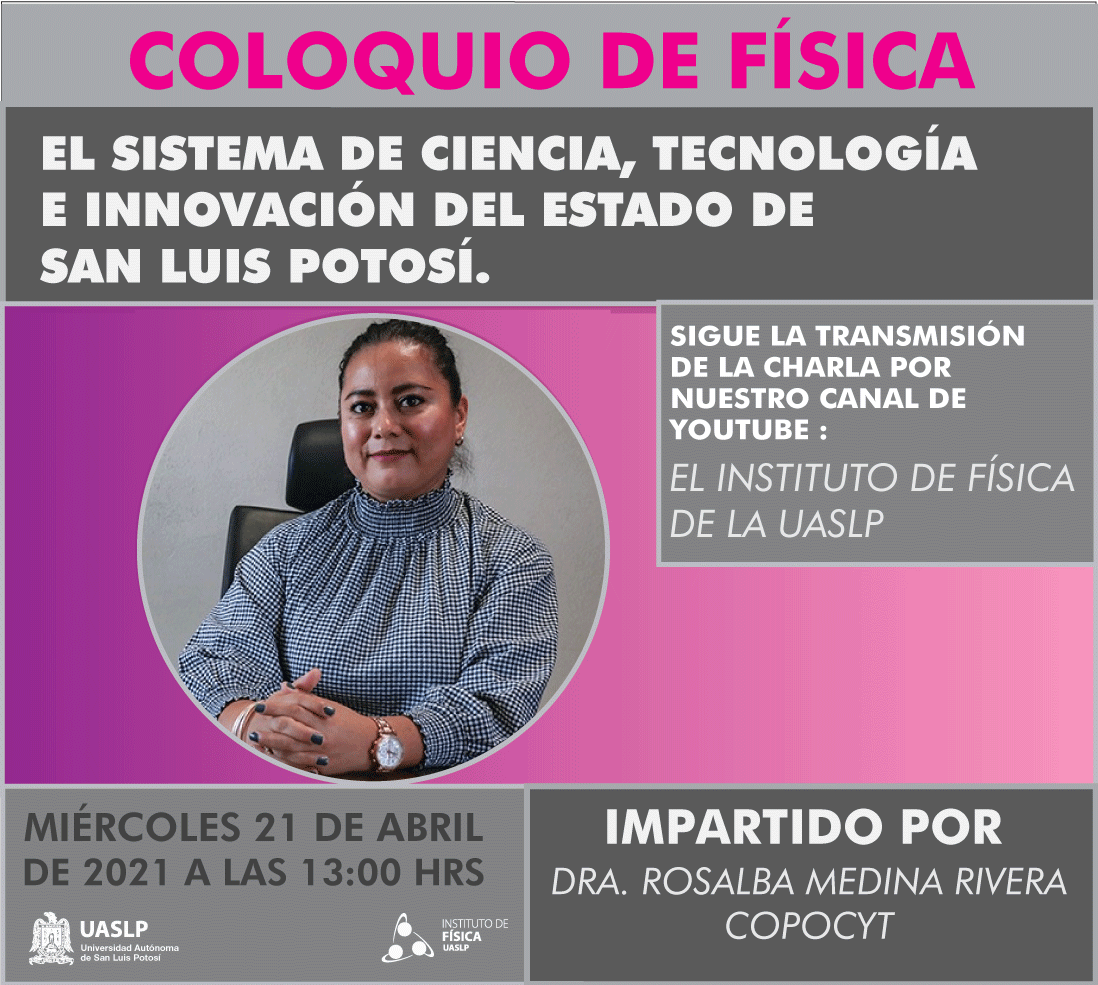
- Detalles
- Categoría: Coloquio de Física
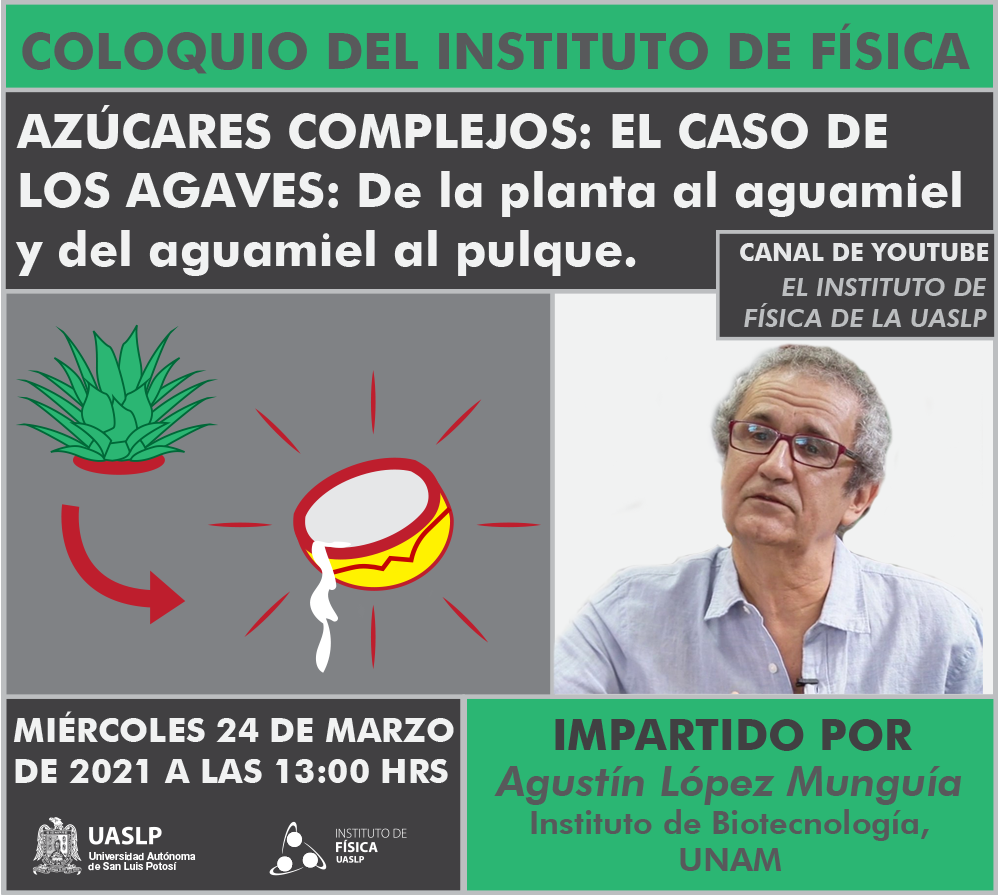
Ponente: Dr. Agustín López Munguía
Procedencia; Instituto de Biotecnología, UNAM
Resumen:
Las fructanas en general, las de agave en particular, son polímeros de fructosa cuya
influencia en la microbiota intestinal (capacidad prebiotica) se ha estudiado solo a partir
de la última década. A pesar de su origen ancestral y numerosas publicaciones
relacionadas con la producción de aguamiel y pulque, el conocimiento sobre la evolución y
concentración de los azúcares simples y complejos presentes en el aguamiel durante el
ciclo de vida de la planta, es poco conocido. En esta conferencia se describe la
composición del aguamiel en plantas de agave (A. mapisaga y A.salmiana) durante su vida
productiva (4-9 meses). Encontramos que la composición del aguamiel en términos de
fructanas y azúcares simples cambia a lo largo del proceso. El principal carbohidrato del
aguamiel es la sacarosa, que se hidroliza parcialmente durante la acumulación diaria en el
cajete. Describimos también el impacto que el proceso diario de “raspado” del cajete
tiene en la extracción de fructanas de la planta al aguamiel, así como los cambios en el
perfil de azúcares complejos durante su acumulación en la planta antes de extraerse.
Estos cambios dan lugar a una composición heterogenea en el aguamiel, incluyendo la
síntesis de fructo-oligosaccharidos microbianos, producto de la microbiota endógena del
aguamiel. Una conclusion importante de este trabajo deriva del hecho de que buena parte
de las fructanas se desperdicia en el metzal (biomasa que resulta del raspado).
- Detalles
- Categoría: Coloquio de Física
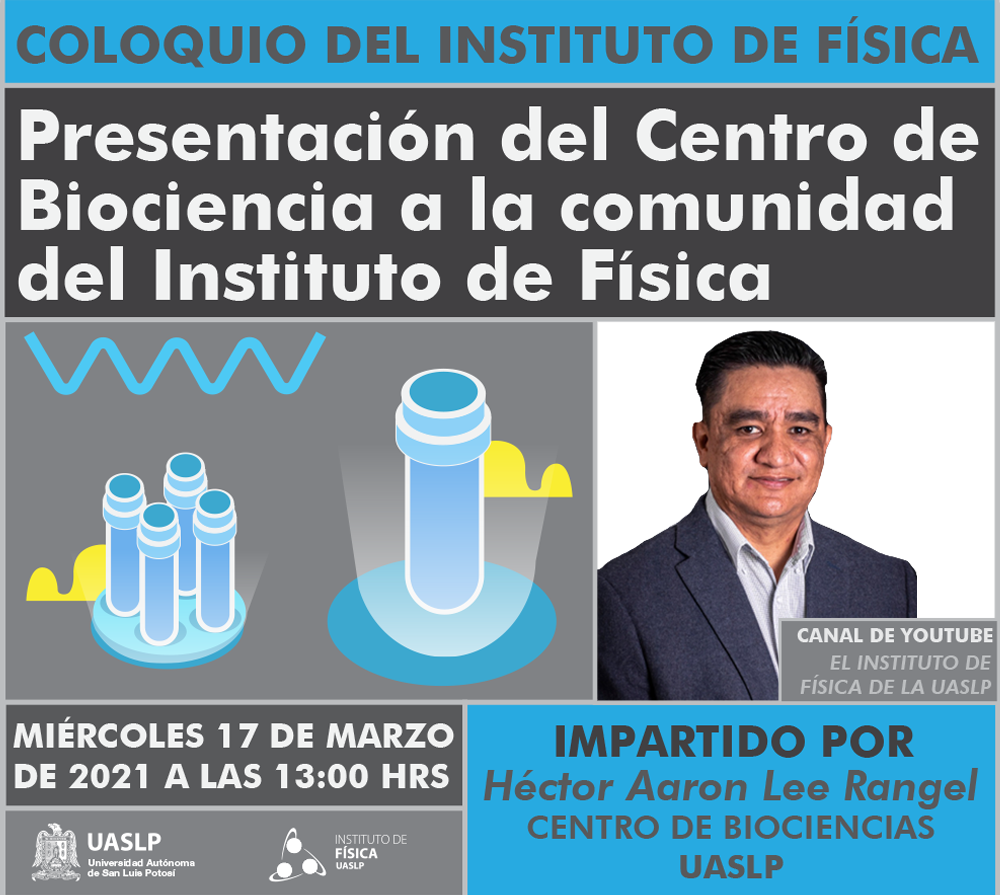
Liga Youtube:
https://www.youtube.com/channel/UCijcZAcDo1Ih5u9e8kiFP3g
Ponente: Dr. Héctor Aaron Lee Rangel
Procedencia: Centro de Biociencias, UASLP
Resumen:
El Centro de Biociencias de la Universidad Autónoma de San Luis
Potosí, cuenta con un bioterio de barrera para producción de animales
de laboratorio, sección de servicios a la investigación, y apoyo de
equipamiento para las áreas biológicas y de la salud.
- Detalles
- Categoría: Coloquio de Física










